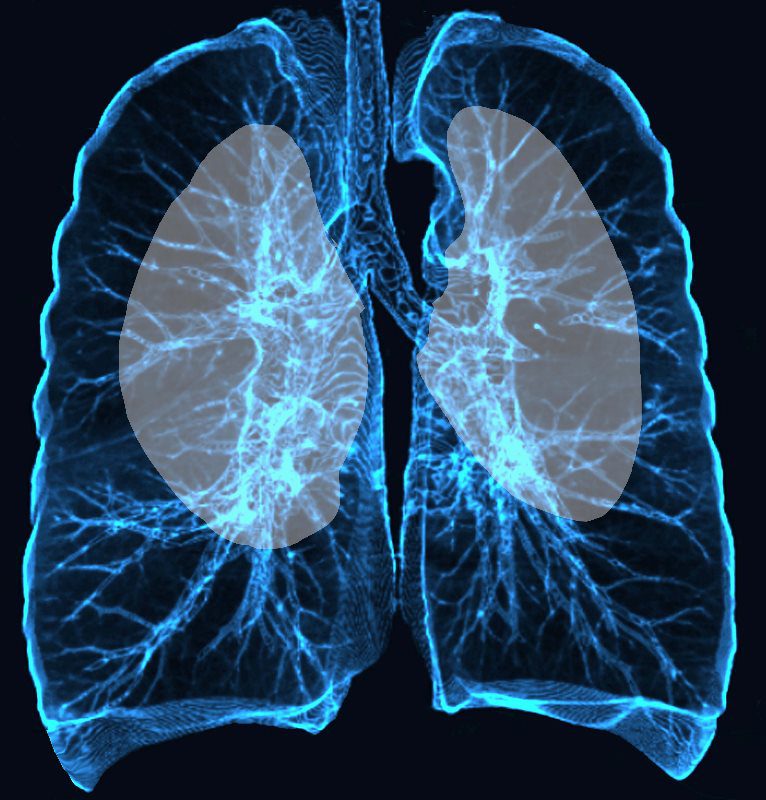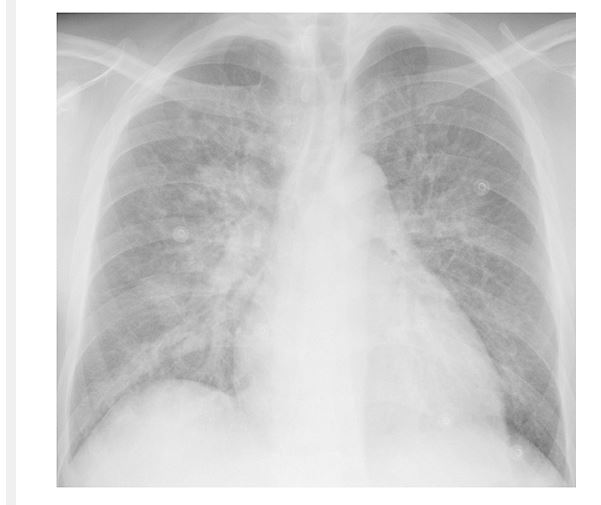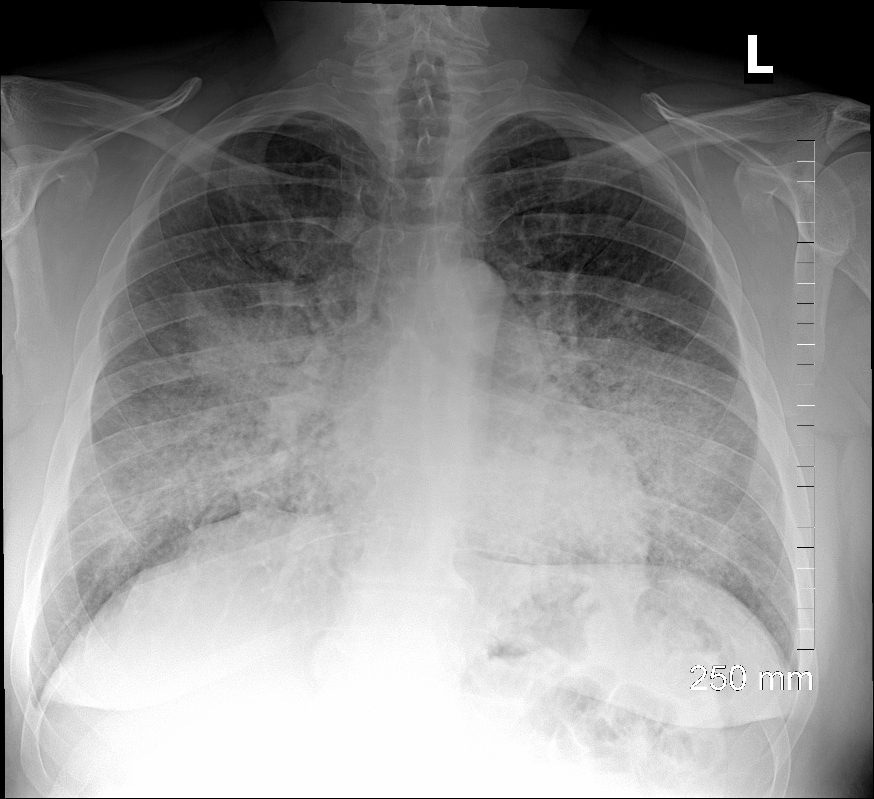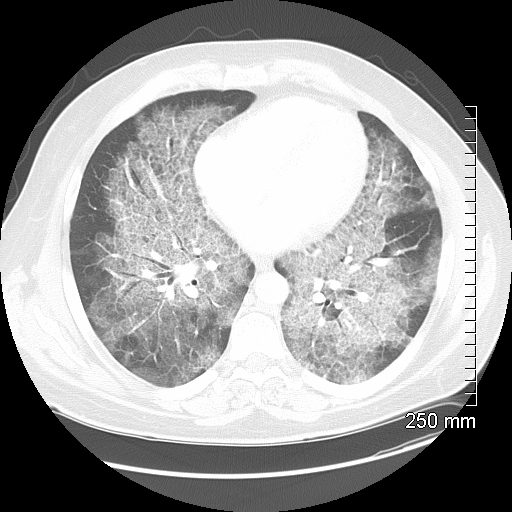
Ashley Davidoff MD TheCommonvein.net lungs-0770
- Perihilar distribution refers to the pattern of certain lung diseases that primarily affect the central area of the lungs near the hilum,

Courtesy Start Radiology

Follow up
Ashley Davidoff TheCommonVein.net 117528.8

central distribution
Ashley Davidoff
TheCommonVein.net
-
- PCP Pneumonia
- Crack Inhalational Injury
- See Case 170Lu
- Sarcoidosis: This is a condition that causes inflammation in different parts of the body, including the lungs. In the lungs, sarcoidosis can cause small clusters of inflammatory cells, known as granulomas, to form around the airways and blood vessels in the perihilar region.
- Lymphangitic carcinomatosis: This is a condition in which cancer cells spread to the lymphatic vessels in the lungs, causing them to become inflamed and blocked. This can lead to perihilar nodules or infiltrates on imaging studies.
- Hypersensitivity pneumonitis: This is an immune-mediated lung disease that can be caused by exposure to various environmental allergens, such as mold, dust, and animal droppings. In some cases, hypersensitivity pneumonitis can cause perihilar infiltrates on imaging studies.
- Silicosis: This is a lung disease caused by long-term exposure to silica dust, which can occur in occupations such as mining, quarrying, and sandblasting. Silicosis can cause perihilar nodules or masses on imaging studies.
- Pulmonary tuberculosis: This is a bacterial infection that primarily affects the lungs. In some cases, pulmonary tuberculosis can cause perihilar infiltrates or nodules on imaging studies.
